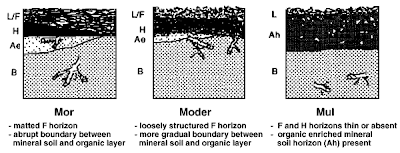
Tim Flannery's exposition of fire- vs herbivore-dominated ecosystems:
"Large herbivores return nutrients to the soil quickly and with a bonus (nitrogen fertilizer). Fire returns nutrients to the soil only after a long period--and then at a considerable loss. As a result, fire and soils act to promote each other. Together, they can produce an ecosystem which is spiraling ever downwards as nutrients become fewer while fires become more important.
The result of this cycle is an accelerated selection for scleromorph plants, which can survive in nutrient-poor soils. A self-reinforcing cycle of soil impoverishment, soil drying and soil exposure is then initiated. Much water is lost through runoff in such situations before it can be returned to the skies through transpiration. This lowers effective rainfall. Degradation can go so far that even if fire can be stopped, the soil is so impoverished that it can no longer support the kinds of plants needed to feed large herbivores. Thus, the change can be made almost irreversible.
A canopy of broad-leaved 'dry' rainforest species, such as survives in tiny fire refuges across the north of Australia today, could, if they were more widespread, enhance rainfall by up to 60 percent and push rainfall much further south. This is because the plants and the soils they protect retard the runoff of water. Through the leaves in their dense canopy they release vast amounts of the trapped water as moisture into the atmosphere. During the wet season, the winds blow in from the coast. As a result, the moisture transpired by the plants is formed into clouds and blown southwards to fall again as rain.
Most of northern Australia is covered with eucalypt woodlands today. After rain, the water rains rapidly away, for the plants and thin soil cannot hold it. The release of moisture to the atmosphere through the narrow eucalypt leaves is insufficient to form significant clouds. As a consequence, the rainfall gradient between the coast and inland is incredibly steep in northern Australia."
The diagram at the beginning shows three types of soil: Mor, Moder, and Mull, which range from slow/intermittent decomposition (Mor-fire) to fast/continuous decomposition (Mull-earthworms).
No comments:
Post a Comment